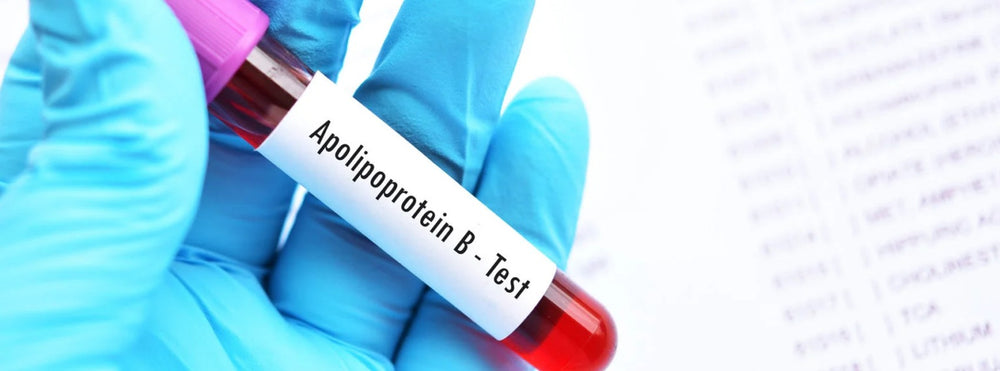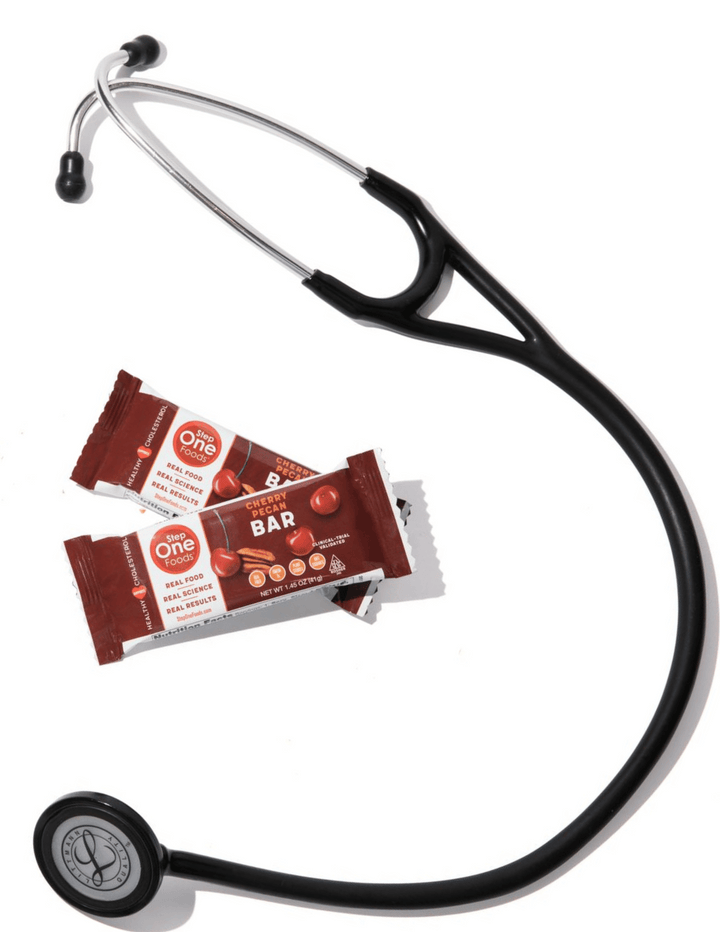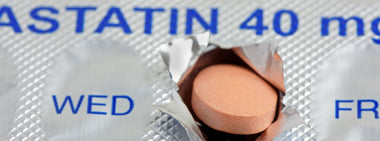What’s apolipoprotein B (ApoB) and why should you care?

This week’s blog is a little longer than usual. But stick with me. I need to give you a fair amount of background before I can dive into apolipoprotein B - and why you might be interested in having this marker checked.
Let’s start with the background.
Cholesterol circulates in our bloodstream in the form of lipoproteins. There are several types but the ones you’re likely most familiar with are high-density lipoprotein (HDL, good cholesterol) and low-density lipoprotein (LDL, bad cholesterol). A lipoprotein is a little sphere that consists of 2 main compartments, the “lipo” part – which includes fat and cholesterol in the center of that sphere – and the “protein” part – which comprises the outer-most layer. The protein part is necessary so that the fatty cholesterol particles can stay suspended in blood, which is mostly water.
Because LDL is so closely linked to heart disease risk, we all obsess over low-density lipoprotein levels. However, did you know that when you are provided an LDL number, that number is almost always calculated rather than directly measured? The formula to calculate LDL is as follows:
LDL = TC – HDL – TG/5
Where TC = total cholesterol and TG = triglycerides. This formula falls apart when TGs are very high (400 mg/dL or above), but most people have TGs well below that so most of us will get a calculated LDL as part of our cholesterol profile.
Now, just because LDL is calculated rather than measured directly doesn’t mean it has no value. In fact, the vast majority of studies looking at cardiovascular risk and outcome have relied on the calculated LDL value. So a high LDL is still bad. But there’s more to that number than meets the eye, and calculating it using 3 other numbers can add additional squishiness to the result. Which is where apolipoprotein B (ApoB) will come in, but more on that later.
Here's another important subtlety: When you’re given an LDL measurement, let’s say 130, that number comes in units: mg/dL. Milligrams (mg) are a unit of weight and deciliter (dL) is a unit of volume. So what we can say is that if we take a deciliter of your blood out, scrape out the LDL and put it on a scale, it will weigh 130 milligrams.
Huh?
The main point of that discussion is that LDL is not one type of particle. It’s a FAMILY of particles. And that family can contain small particles, big particles and every size in between. What you don’t want is a whole bunch of small particles making up the majority of LDL weight because you will need more of those particles to get you to that 130 mg. More LDL particles circulating in your blood means more opportunities for one or more to randomly bump into an artery wall. Oh – and since they’re small – a higher likelihood that those LDL particles will find a way to sneak in and contribute to plaque.
And here’s the thing: we have no way of knowing how many LDL particles you have based upon your calculated LDL value.
One way to get at particle size and number is to measure it directly. That test is called LDL subfraction analysis and it’s provided by several laboratories. Unfortunately, it’s not a routine test because it takes more time and is significantly more expensive than deriving an LDL number. Another is to look at the rest of the cholesterol profile. In general, people with low HDL and/or higher than normal TGs also tend to have smaller LDL particles. But this is not a given 100% of the time.
And this is where we finally get to ApoB. PHEW!
Different protein types can comprise the surface of different lipoprotein particles. Conveniently, apolipoprotein B just happens to be the protein that’s on the surface of every LDL particle – big or small. So its concentration is more reflective of the total number of LDL particles you have. ApoB levels are also measured directly rather than calculated, so there's nothing squishy about an ApoB value. And the test is way less expensive than LDL subfraction analysis.
No wonder a lot of cholesterol specialists feel that ApoB may actually be a BETTER and more instructive marker of cardiovascular risk than LDL.
Unfortunately, what constitutes an optimal ApoB level is not completely agreed upon, which is perhaps why this risk marker is not yet part of routine clinical care (though it likely will be in the future). But here are some benchmarks:
- >130 mg/dL Published cholesterol management guidelines call out ApoB levels of 130 mg/dL or above as indicating enhanced risk that might influence whether or not statins are initiated.
- 100 mg/dL Based on population studies, middle of the road ApoB levels fall around 100 mg/dL, but that’s not exactly reassuring. After all, we see plenty of middle of the road cholesterol numbers in people who end up with heart disease.
- <80-90 mg/dL Most lipidologists would say that ApoB should fall below 90 and ideally below 80 mg/dL, and perhaps even lower especially in people with established heart disease.
- <60 mg/dL Some longevity experts argue that ApoB should fall below 60 mg/dL to ensure optimal cardiovascular disease protection. This last ApoB goal comes from the fact that people who are genetically blessed enough to have LDL levels averaging 30 mg/dL throughout their lives basically never get heart disease. LDL levels in the 30 mg/dL range mean that ApoB levels are also ridiculously low and this scenario is seen when individuals have absent or defective PCSK9 levels.
So what can you do to try and lower your ApoB levels? It’s the exact same advice as for lowering LDL in general. And if you’re a regular reader of this blog, you already know how much impact diet has on LDL. LDL and ApoB will go down in tandem in response to diet, with ApoB potentially falling even more profoundly because not only does a healthy diet reduce LDL weight, it also helps increase particle size, reducing the number of LDL particles for any calculated mg/dL reading.
Finally, you might be wondering how I use ApoB in my clinical practice. If I’m prescribing statins for established heart disease, I treat LDL to goal. Getting LDL below 70 or 50 mg/dL basically guarantees that ApoB will be in a good range as well so I might not measure it. If I see someone with a strong family history of heart disease or a higher than anticipated coronary calcium score, I will typically take a deep dive on risk factor analysis and that will include looking at particle size and number and ApoB as part of that evaluation. If there is a question as to whether the optimal LDL goal has been attained (either with drugs or non-pharmacologic means) I might also use ApoB levels as another check on adequacy of prevention efforts.
I’m definitely in the camp that believes that ApoB is a better marker of risk than LDL. Having said that, there’s lots of published, consistent guidance around LDL goals and management strategies to get to those goals, while experts and guidelines are not always in lock step when it comes to ApoB. Nevertheless this is a relatively inexpensive test that can provide additional, important information about your risk – especially if your LDL does not automatically place you in a low or high risk category for developing cardiovascular disease.

Tested & Proven Results.
- Cardiologist formulated
- Supported by over 500 publications
- Clinically-proven, in a double-blind randomized trial with Mayo Clinic and The University of Manitoba
80% of participants lowered their cholesterol in just 30 days. With just two servings per day, Step One Foods offers a proven-effective way to naturally lower LDL (bad) cholesterol.
Get heart health tips and articles like this, delivered right to your email.
New articles every week.
You may also like...

The Next Super Food: How Pecans Help Lower Cholesterol

You don’t need to avoid foods with cholesterol…except for these



